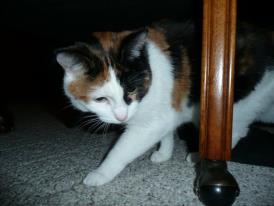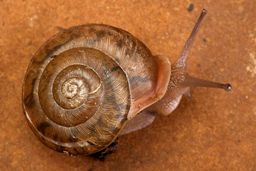
Classification
Domain: Eukarya
As Gary Kaiser so nicely explains in his microbiology webpage,
members of this domain are
.jpg) made up of eukaryotic cells. This
means that the cells have membrane bound organelles. Some of
those that belong to Eukarya are multicellular, though
there are unicellular members as well, and eukaryotes tend to be
larger in relative size than members of the Archaea and Bacteria
Domains. Some eukaryotes have cell walls, though this is not a
trait shared by all members. For the members that have a cell
wall, the wall has no peptidoglycan, which is a macromolecule
found in the cell walls of Bacteria (Kaiser, 2011).
made up of eukaryotic cells. This
means that the cells have membrane bound organelles. Some of
those that belong to Eukarya are multicellular, though
there are unicellular members as well, and eukaryotes tend to be
larger in relative size than members of the Archaea and Bacteria
Domains. Some eukaryotes have cell walls, though this is not a
trait shared by all members. For the members that have a cell
wall, the wall has no peptidoglycan, which is a macromolecule
found in the cell walls of Bacteria (Kaiser, 2011).
Kingdom: Metazoa(Animalia)
The Metazoa members are multicellular and are made up of
eukaryotic cells, as explained above. The cells group together
and form tissues which are specialized and used for the organisms’ survival and daily function
(Kingdom, 2003).
Most animals are able to move, are heterotrophic, meaning that
they must consume their nutrients and are not able to make their
own food via photosynthesis, and can respond to their
environment due nerve nets (Metazoa, 2012). Animals have aerobic
metabolism which means they use oxygen in glycolysis, the
Krebs’s cycle, and electron transfer system to create ATP
energy, which is then used as the energy source for their bodily
functions (Metazoa, 2012). Sexual reproduction is
characteristic of the Animalia where a male donates half of his
genome via sperm from the sexual organs called testes and the
female contributes her half via eggs from the sexual organs
called ovaries to create offspring (Kingdom, 2003).
organisms’ survival and daily function
(Kingdom, 2003).
Most animals are able to move, are heterotrophic, meaning that
they must consume their nutrients and are not able to make their
own food via photosynthesis, and can respond to their
environment due nerve nets (Metazoa, 2012). Animals have aerobic
metabolism which means they use oxygen in glycolysis, the
Krebs’s cycle, and electron transfer system to create ATP
energy, which is then used as the energy source for their bodily
functions (Metazoa, 2012). Sexual reproduction is
characteristic of the Animalia where a male donates half of his
genome via sperm from the sexual organs called testes and the
female contributes her half via eggs from the sexual organs
called ovaries to create offspring (Kingdom, 2003).
Phylum: Mollusca

As explained by Hickman, Mollusca is a phylum that includes a diverse amount of marine and land species that play an important role in the world. Molluscs are defined by their mantle cavity, development of a buccal mass, and the development of the radula. At the same time, different species throughout mollusks have lost some of these features (Hickman, 2012).
Class: Gastropoda
Gastropods are a class of mollusks that includes species of
snails, limpets, and slugs. Many gastropods are important
herbivores while others are specialized predators. Gastropods
have a wide range of structural complexity that is reflected in
their diverse modes of reproduction (Barry 1977). Class Gastropoda is filled with diversity in species, and many of which
can live in a variety of environments.
Order: Stylommatophora
Stylommatophora is an order of the larger class Gastropoda.
Stylommatophora is considered a clade of pulmonates, and includes a
large group of air-breathing land snails and slugs. Snails in
Stylommatophora have lost their gills, and they developed an
air-breathing organ with a lung on its roof
(Purchon 1968).
The two strong synapomorphies of Stylommatophora are a long pedal
gland placed beneath a membrane and retractile tentacles
(Dayrat and
Tillier 2010). Their eyes can be found on the tips of two long
tentacles.
Family: Polygyridae

Polygyridae is a family of air-breathing land snails that is
part of the order Stylommmatophora. Polygyridae are
characterized by their uniqueness of not using a love dart for
mating compared to others in the order Stylommatophora that use this
as part of their mating process (Davison et al., 2005).
Genus: Fumonelix
Fumonelix is a genus that falls into the family
Polygyridae. The species Fumonelix orestes falls into
this genus and sometimes is referred to as the engraved covert
(Encyclopedia of Life, 2012).
Species: Fumonelix orestes
(Mesodon orestes)
mesos- "middle", odon - "tooth"
To find out where F. orestes lives, check out Habitat